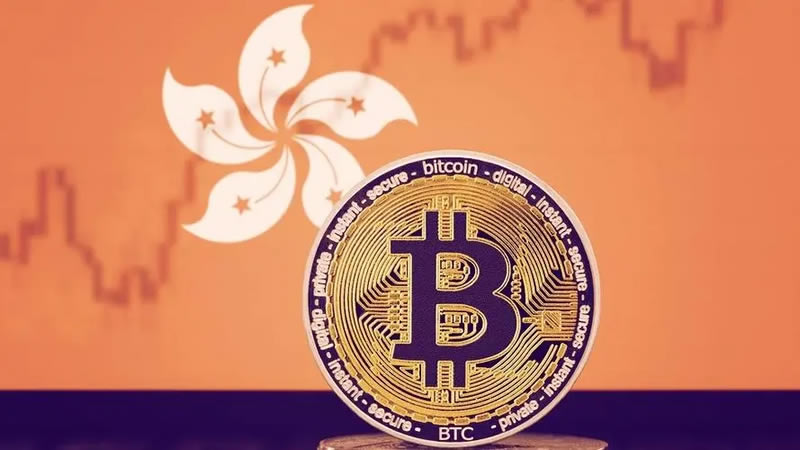Practical progress of tokenization of securities and investment products in Hong Kong
- 王林forward
- 2024-02-04 10:30:031337browse
On January 12, 2024, Tsinghua University School of Economics and Management successfully held the third Digital Finance Frontier Academic Conference. The conference was hosted by the Digital Financial Asset Research Center of Tsinghua University School of Economics and Management and co-organized by Tsinghua SEM Executive Education Center. In the afternoon of the same day, Dr. Zou Chuanwei, chief economist of Wanxiang Blockchain and invited researcher of Tsinghua SEM Digital Financial Asset Research Center, delivered a keynote speech on the theme of "Practical Progress of Tokenization of Securities and Investment Products in Hong Kong".
Dr. Zou Chuanwei shared four parts: tokenization and digital assets, two circulars from the Hong Kong Securities Regulatory Commission, Hong Kong’s tokenization practice progress, and tokenization conjectures.

The core logic of tokenization is to map traditional assets to programmable blockchain ledgers to achieve digitization and flexible operation of assets. This process involves the interaction of two ledger systems: the traditional ledger and the blockchain ledger. Traditional ledgers are mainly based on relational databases and lack natural programmability. The tokens of the blockchain realize programmed operations through smart contracts, and have the advantages of openness, point-to-point transactions and settlement of transactions.
Tokenization is to lock assets in traditional ledgers and generate corresponding Tokens in blockchain ledgers. These Tokens represent assets and realize the circulation of assets through Token transactions. The core of tokenization is to ensure that the two ledgers are statically and dynamically synchronized. Through tokenization, we can operate assets in a more flexible and convenient way, breaking the limitations of traditional finance.
However, not all assets are suitable for tokenization. Some assets that do not have ledgers, such as vehicles and collectibles, are difficult to tokenize due to their uniqueness and inability to be uniformly registered. Even for assets that already have ledgers, not all assets are suitable for tokenization. The key is to ensure that synchronization issues between the two ledgers are resolved.
In addition, the tokenization of securities has also caused a series of problems in financial infrastructure. The registration, custody, clearing and settlement of securities transactions need to be compatible with the existing financial infrastructure. In addition, how to maintain compatibility with the financial regulatory framework at the legal level is an issue that is often overlooked in industry discussions.
The securities tokenization experiment mainly focuses on the post-trade processing link, aiming to improve efficiency and reduce the custody chain. Generally speaking, investors do not hold tokenized securities directly but trade them through brokers or professional institutions. At the same time, the tokenization of income rights combines the characteristics of securitization and tokenization, packaging the cash flow of a company or project into tokenized products for investors to purchase. The advantage of tokenization is that it can activate existing assets, improve capital utilization efficiency, and provide investors with new investment options. However, tokenization also faces some challenges and limitations that require further exploration and improvement.
Tokenized securities are still essentially traditional securities, with just an added layer of packaging. Therefore, tokenization itself does not complicate the product. Regarding the new risks arising from tokenization, the internationally accepted regulatory logic is "same business, same risks, same rules". In addition to meeting traditional securities market regulatory rules, new risks arising from tokenization also need to be additionally managed. This means that regulators need to ensure that tokenized securities comply with applicable laws and regulations and take necessary regulatory measures to protect investor interests. In Hong Kong, for example, the Securities and Futures Commission (SFC) has issued a series of guidance clarifying regulatory requirements for tokenized securities. These requirements include the need for issuers to obtain SFC approval, transactions to obtain SFC licenses, and compliance with anti-money laundering and investor protection regulations. In addition, regulatory agencies also need to pay attention to the technology brought about by tokenization
The Hong Kong Securities and Futures Commission takes a cautious attitude towards investment and product tokenization. At present, the China Securities Regulatory Commission is relatively open to the primary market for tokenized investment products (such as subscription and redemption), but is more conservative about secondary market transactions. The Hong Kong Securities and Futures Commission requires secondary market transactions of tokenized products to provide the same level of protection as non-tokenized products and has proposed strict regulatory requirements.
In terms of practice, tokenization in Hong Kong is mainly divided into three types of projects: government projects, financial institution projects and financial technology institution projects. There is currently no mature template that can make tokenized securities investment products very popular. Run through smoothly. Under Hong Kong’s common law system, there are many links in the tokenization process that need to be polished by market institutions and the Hong Kong Securities and Futures Commission.
The above is the detailed content of Practical progress of tokenization of securities and investment products in Hong Kong. For more information, please follow other related articles on the PHP Chinese website!

